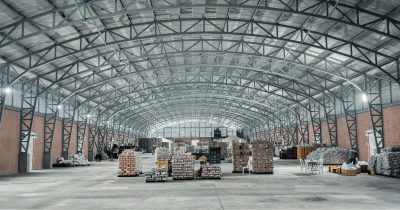Logistics companies cannot function without smooth warehouse operations.
GlobeNewswire estimated the global warehouse market is estimated to grow at a compound annual growth rate of 14% in the next six years – that’s some impressive growth. The growth can be attributed to the rising demand for warehouse space. The e-commerce space is fueling growth in the sector.
One trend that is still prevalent is automation. The e-commerce sector is on the upswing. Companies such as DHL, DHL Supply Chain, and shipping company Maersk are investing in automation to meet high e-commerce volumes.
Benefits of warehouse automation
There are several benefits to warehouse automation. These benefits can ensure warehouses remain resilient.
- Safety and reliability: Robotics can handle heavy packaging with ease. Robotics systems can also handle toxic chemicals which allows humans to avoid toxic fumes and exposure to chemicals.
- Inventory management: Automated systems assist companies to prevent backlogs and allow the company to adapt to demand in the market.
- Strong customer satisfaction: Companies can keep customers happy by delivering goods faster.
- Resilient to changes: Automation allows the supply chain to be more agile. This includes times when demand is suddenly high or improves accuracy for prolonged periods.
Shipping giant Maersk has identified six warehouse trends for 2024:
- Automation – autonomous mobile robots will take center stage, assisting in order picking.
- Stock merging – allowing warehouse users to keep products. Often, warehouse users keep stock separately, but this practice is changing to keep stock together.
- Visibility – More order transparency is the name of the game for 2024. Providing vital information about an order, including from online platforms, will be a “must-have” this year.
- Sustainability – Warehouses are looking to operate sustainably, reducing their environmental impact. This is being done using sustainable materials and environmentally friendly energy sources.
- Restoring and customizing – There is a need for warehouses to be modern. Warehouses will also focus closely on industry-specific needs.
- Data optimization: Moving the warehouse towards operating digitally is crucial to providing speed. This year, warehouses will adapt to modern practices to carry out operations.
E-commerce sector boosts warehouse market
In 2023, the e-commerce sector saw several initiatives to boost the market. Warehouse fulfillment remains important in warehouse operations. Even social media company TikTok has seen the opportunity to offer followers fulfillment warehouses moving into logistics.
Machine learning is another trend taking center stage in warehousing and logistics. Artificial intelligence (AI) is making warehousing more efficient. The AI is seeing automation of decision-making processes. This includes assisting warehouses with replenishing inventory. There is a challenge for 2024 – labor shortage. Labor challenges will see companies invest heavily in automation. This will also help companies keep up to speed with keeping customers satisfied.
Share this article
About the author
Sharl is a qualified journalist. He has over 10 years’ experience in the media industry, including positions as an editor of a magazine and Business Editor of a daily newspaper. Sharl also has experience in logistics specifically operations, where he worked with global food aid organisations distributing food into Africa. Sharl enjoys writing business stories and human interest pieces.














